Family Verbenaceae | Genus Vitex Rank Species | |
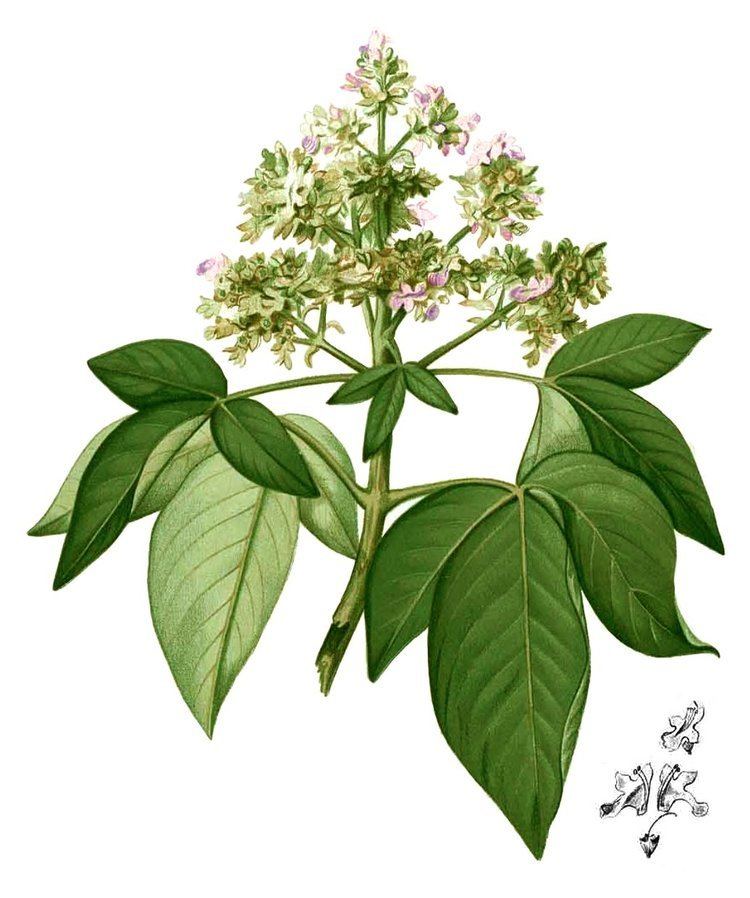 | ||
Similar Chastetree, Berrya cordifolia, Vitex altissima, Vitex trifolia, Vitex glabrata | ||
Octonary ingredients of vitex pinnata formulations pankaj oudhia s medicinal plant database
Vitex pinnata is a tree of the Verbenaceae family, native to south and south east Asia. It is a slow growing tree, growing up to 20 metres with 1-3 m. circumference trunk that has a grey-brown-yellow bark; its leaves are scented.
Contents
- Octonary ingredients of vitex pinnata formulations pankaj oudhia s medicinal plant database
- Vitex pinnata herbal tree
- General Description
- Distribution
- Taxonomy
- Ecology
- Uses
- Conservation status
- Propagation
- References
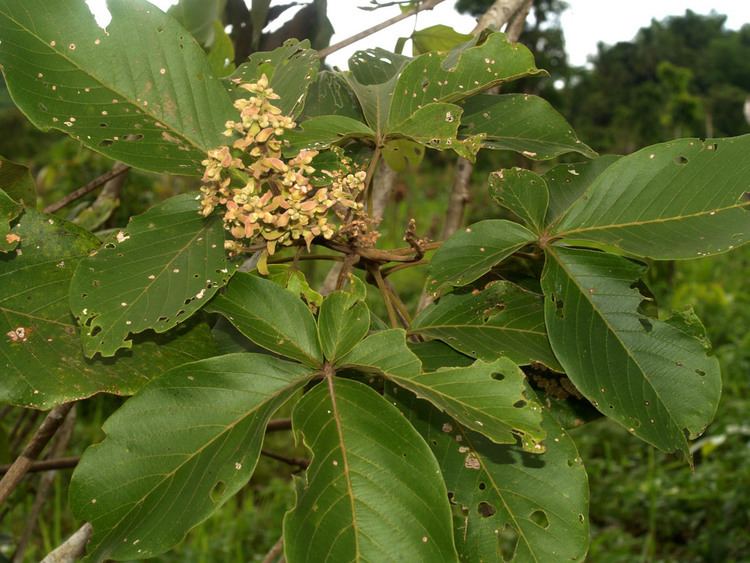
Vitex pinnata herbal tree
General Description
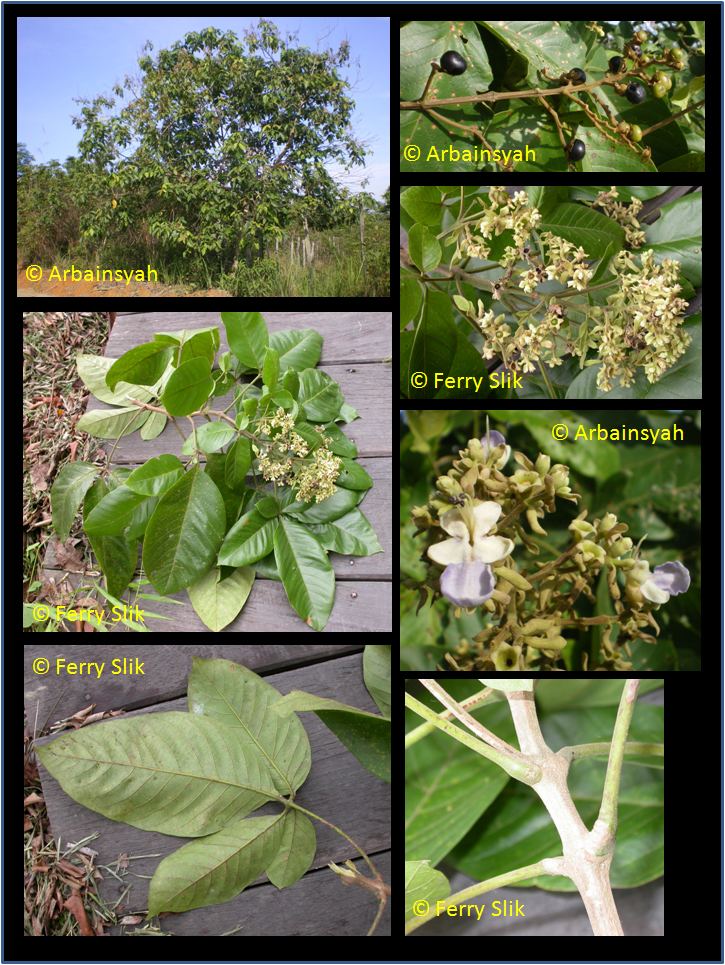
Bark fissured, flaky, pale yellowish grey to brown; inner bark pale yellow becoming green on exposure; sapwood soft yellow to brown. Leaves 3- or 5-foliolate. Leaflets almost sessile, outer two usually much smaller than the others, ovate or elliptic, 3–25 cm long, 1.5–10 cm wide; base rounded to slightly wedge-shaped; apex acuminate; margin entire; secondary veins 10—20 pairs; Inflorescences terminal panicles; Flowers whitish blue. Fruits 5–8 mm in diameter; ripening black
Distribution
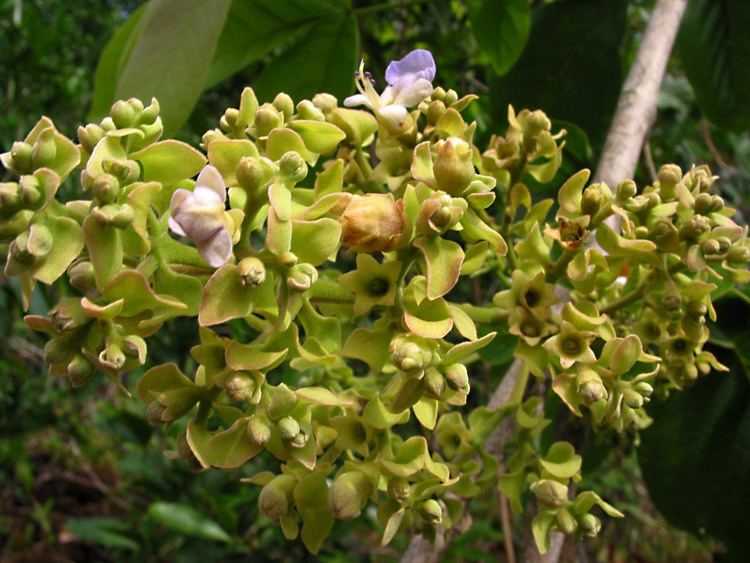
Indo-Malaysia covered Borneo; Sabah, Sarawak and all provinces of Kalimantan. Indonesia, North to India, Sri Lanka and Cambodia. In the Philippines this species is only known from the islands of Palawan, Culion and Tawi- Tawi
Taxonomy
Vitex pinnata has many depreciated synonyms, including Vitex pubescens and Vitex arborea.
Ecology
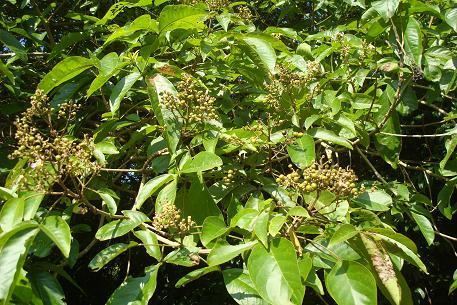
Growing well usually in secondary forests, on riverbanks and along roads including in marginal land such as Imperata cylindrica area. The species seemingly tolerates regular fires. In tropic condition such as in East Kalimantan, flowering and fruiting are almost all the time from January to December. The fruits are eaten by birds and seeds cannot germinate under the shade and need light to germinate.
Uses
Vitex pinnata has a very strong and durable wood, it is durable even in contact with water or soil. It is a grayish brown in color. Density is about 930 kg per cubic metre (58 lbs per cubic foot). Wood is used for posts, door and window frames, sleepers and some furniture.
The wood is used for construction and the manufacture of knife handles. Leaves and bark are used to treat abdominal pain, fever and malaria.
Conservation status
Least concern.
Propagation
Vitex pinnata can be propagated by seeds, cuttings and wildlings. One kilogram seeds of Vitex pinnata are around 1100-1200 seeds.
